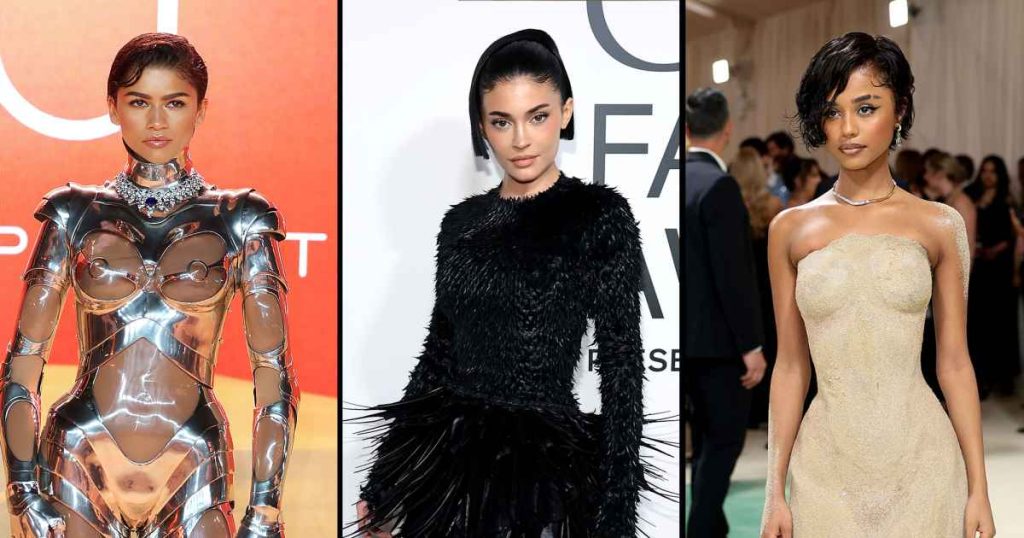The year 2024 marked a pivotal shift in red carpet fashion, moving beyond mere displays of designer labels towards a more nuanced and expressive form of personal storytelling. Celebrities and their stylists strategically curated looks that blended high fashion with a distinct sense of individuality, transforming the red carpet into a platform for narrative creation and thematic exploration. This evolution sparked conversations that delved deeper than the traditional “Who are you wearing?” query, engaging audiences with the symbolism, history, and creative thought processes behind each ensemble.
The release of the highly anticipated film “Wicked” significantly amplified the red carpet’s narrative potential. Stars Ariana Grande and Cynthia Erivo, embodying their respective characters, Glinda and Elphaba, captivated audiences with a meticulously orchestrated press tour wardrobe. This “method dressing” approach saw them donning custom creations by prominent designers like Louis Vuitton, Vivienne Westwood, and Thom Browne, each look crafted to reflect the essence of their on-screen personas. This strategic use of fashion extended the film’s magic beyond the screen, further fueling anticipation and fan engagement. The “Wicked” press tour exemplified how red carpet fashion can become an integral part of a film’s marketing and storytelling, blurring the lines between character and actor.
Beyond the “Wicked” phenomenon, a renewed appreciation for archival fashion became another defining trend of 2024. Celebrities like Sydney Sweeney embraced the opportunity to pay homage to iconic fashion moments by donning vintage pieces imbued with historical significance. Sweeney’s choice to wear the Marc Bouwer gown previously worn by Angelina Jolie at the 2004 Academy Awards generated significant buzz, demonstrating the power of archival fashion to transcend time and create new narratives. This resurgence of interest in archival pieces highlights a growing appreciation for fashion history and the enduring allure of iconic designs.
Sweeney’s tribute to Jolie wasn’t simply a fashion statement; it was a cultural moment that resonated across social media. The shared appreciation between Sweeney, Bouwer, and the online community underscored the emotional and historical weight these garments carry. It wasn’t just about wearing a beautiful dress; it was about participating in a continuing fashion dialogue, acknowledging and celebrating the enduring impact of influential designs. This exchange emphasized the power of social media in amplifying the narrative potential of red carpet fashion, transforming individual style choices into shared cultural experiences.
The rise of method dressing and the resurgence of archival fashion signify a deeper shift in how celebrities utilize the red carpet. It’s no longer solely about showcasing the latest trends; it’s about strategically leveraging fashion to communicate personal style, pay tribute to iconic moments, and engage in a broader cultural conversation. This evolution elevates the red carpet from a mere display of luxury to a dynamic platform for self-expression and storytelling, enriching the experience for both celebrities and audiences alike. This shift signals a more thoughtful and intentional approach to red carpet dressing, where each choice carries a deeper significance beyond the superficial.
The 2024 red carpet became a canvas for individual expression, historical reflection, and the art of storytelling through fashion. From the carefully curated “Wicked” press tour to the revival of iconic archival pieces, celebrities demonstrated the power of clothing to transcend mere aesthetics and communicate a deeper message. This evolution suggests a future where red carpet fashion continues to evolve as a powerful platform for personal branding, cultural commentary, and the celebration of fashion history, further blurring the lines between entertainment, fashion, and social commentary. The red carpet has become a stage for more than just beautiful dresses; it’s a stage for narratives, tributes, and expressions of individuality, reflecting a broader shift in the cultural landscape.

